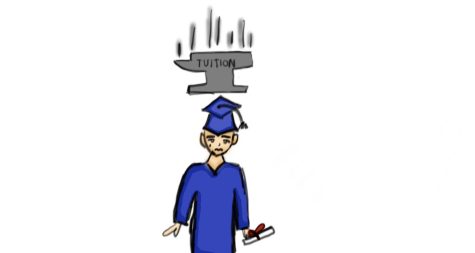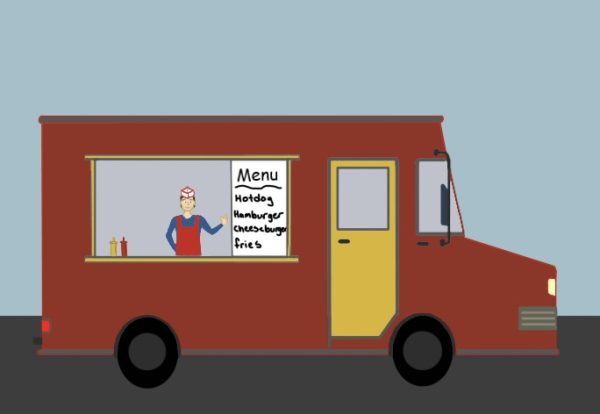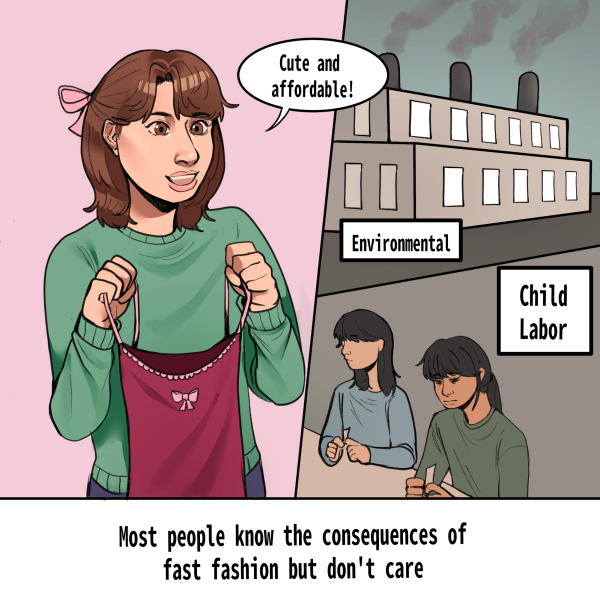Don’t step into the trap called college loans
Although college loans seem to be helpful, they prove to be the opposite. College loans are unnecessary burdens that should be avoided.
As the month of April is coming to a close and May 1st approaches, so does the decision of committing to a college. This may be easy for some Bonita Vista High (BVH) students but to others, it is the hardest decision they have to make due to financial hardships. In order to be able to afford college, many students have to take out loans. However, students should not take out loans for their first year of college because of the high cost of paying them off, which can be difficult to pay off and can lead to a slippery slope if debt expenses are not paid on time.
Lately, the pursuit of an expensive higher education has made the trade-off similar to that of selling one’s soul for capitalism. This means that walking a college-oriented path is a lot more expensive than it was a generation or two ago.
The College Board describes that the average cost of attending a private four-year university is three times that of a public four-year institution. For out-of-state students, the average overall cost at a public four-year university was 43,280 dollars in the 2020-2021 academic year and 54,880 dollars at a private school. This means that if a student wants to go to the school of their dreams they have three options; rely on aid, rely on scholarships or get a loan.
Many Americans’ savings are not enough to support the full cost of college. As a result, more students and families have to rely on loans to pay for their education, and the average student loan debt is rising. According to the Center for American Progress, in the United States, student loan debt has reached new heights, with 43 million people owing a collective 1.5 trillion dollars in federal student loans and 119 billion dollars in private student loans.
Investopedia furthers that nearly one-third of all American students go into debt to get through college and the average student loan debt reached a record high of 40,904 dollars in 2021. The financial burden of student loan debt only gets heavier if people want to pursue a master’s or doctorate degree.
However, there is also the allure of loan forgiveness. According to Federal Student Aid, loan forgiveness means that students are no longer required to repay some or all of their loans. Graduates who seek a career in public service can apply for student loan forgiveness under the federal Public Service Loan Forgiveness program.
Loan Forgiveness is a seductive prospect that may encourage students to take out more debts in the hopes of being forgiven later. Even the current President Joe Biden had promised loan forgiveness in his campaigns. According to Insider, Biden promised to lessen the 1.7 trillion dollars student debt crisis during his campaign back in 2020, promising debt cancellation and reform of key parts of student-loan programs. However, there was only an extension of the student-loan payment during the pandemic but payments are now set to resume on May 1.
Increased student loan access is a double-edged sword. On one hand, greater access to student loans signifies a boost in the number of people who attend college. On the other end, debt from student loans can be harmful because they prevent students from pursuing other financial goals or hurt their credit score in the long run.
According to Citizen Bank, keeping up with student loan monthly payments is a must, otherwise, one’s credit score could drop. This can be bad news for students who do not have the funds to pay every month. A person’s credit score affects how likely they are to be approved for a credit card, which may be necessary to finance a new car, get a mortgage and many more. Beyond this, defaulting on student loans can prevent you from getting any other loans.
Furthermore, according to Investopedia, the federal government does not underwrite student loans. Underwriting is a process that banks and lending organizations use to determine whether a borrower is creditworthy. Underwriting standards are used to determine how much debt should be granted, as well as the terms and interest rates.
However federal loans do not do this, which means that student loan borrowers receive the same interest rate, regardless of their underlying credit history. As a result, borrowers with better credit may pay more on their student loans, while those with poor credit may pay less. If the borrower defaults on their student loans and the interest rate was not adequately priced for the risk of default, this can result in huge amounts of debt which can financially crush someone
In order to avoid the shackles associated, students should be wise and not take on any student loans they are not financially able to handle at the present.
The best ways to avoid student loans and still achieve the college dream can happen through applying for scholarships and attending a community college. Students must gather as much scholarship money as possible. For example, the BVH counselors organized a scholarship bulletin that features scholarship opportunities for students. The document gets updated every month with new scholarship applications.
If the time or chance does not allow students to cover the cost of college with scholarships, then the greatest and cheapest option is a community college. Community college allows students to have a college education at a cheaper price without taking any loans. According to the College Board, the average published yearly tuition and fees for a public two-year college is just 3,440 dollars. This overall cost is a fraction of the price of a private institution and thousands of dollars cheaper than a four-year state college.
Students can go to community college for two years and then transfer to another university. Within those two years of community college, students can apply for as many scholarships in preparation to transfer to a university. Although paying for college may be hard there is always a way to overcome the financial wall that comes with college.
Unfortunately, the sad reality is that paying for university means thousands of dollars to work for the rest of one’s life to pay off student loans. No one can predict the future and it is better to be safe than to be in debt and the way to do that is by not taking any loans during one’s freshman college year.

I am a senior at Bonita Vista High and this is my second year on staff. I’ve always liked how unbiased and informative the crusader was and it was a...

Hi! I am a junior at Bonita Vista High and it is my third year on the Crusader staff. This year I am the Editor-at-Large and was previously the Sports...



















